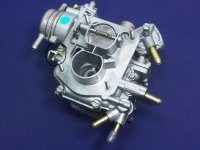shaun
Established member
Hi, i have a 87 1500 which starts fine and after the choke comes off seems to run ok [no MOT at the moment so cannot drive it far]The problem is that after i start it i need it keep the revs up or the car will choke up a eventually stall
Any help thanks Shaun
Any help thanks Shaun




